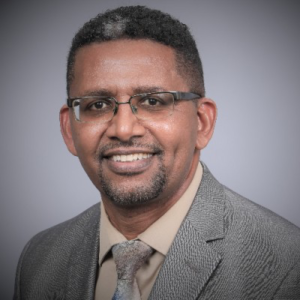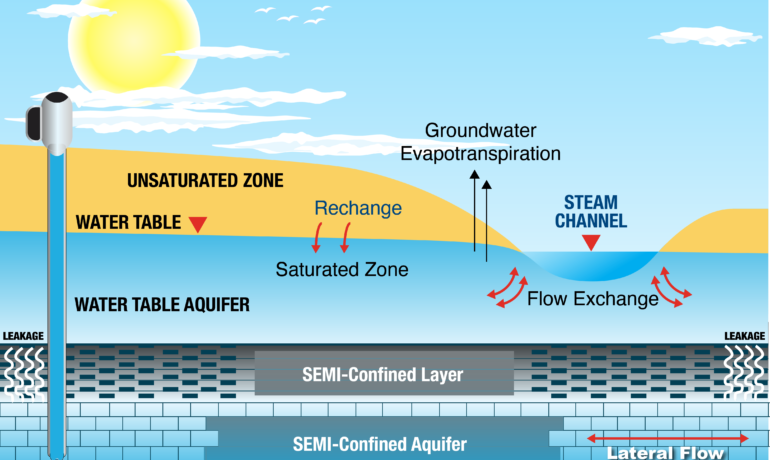Rivers do not flow in a vacuum.
The Nile is one of the longest rivers in the world with its headwaters on the White Nile and its major tributary the Abay (Blue Nile) originating in the Ethiopian highlands. The latter, along with the Baro (Sobat) contributing about 86% of the total Nile flow, start in the rugged Ethiopian mountains flowing north–west and ultimately joining the White Nile in Khartoum, capital city of the Sudan.
The recent dispute between Ethiopia and Egypt highlights the need for new solutions to existing problems; new solutions that come in the form of advances in hydrologic modeling, seasonal prediction, multi-year variability, and systems optimization. When looking at a transboundary river like the Nile and trying to figure out which country is using how much, simply trying to measure flow at point X (upstream Ethiopia) and point Y (downstream Egypt) will not cut it. One needs to look at what happens along this diverse terrain followed by the river: the untold and complex interaction between the river and the ground and groundwater beneath it.
A river’s interaction to its underlying groundwater, whether it is inward or outward flowing, depends on factors that include terrain characteristic (steep slope vs. flat surface, the level of underground water in the subsurface, and the riverbed’s characteristics among others). In flat terrain, such as those found in the Sudan and Egypt, the Nile has time to “pause” and interact with groundwater in a significant though peaceful, way.
Recent advances in hydrological science tells us why we cannot look at the amount of river flow in isolation from its subsurface and neighboring land and groundwater interactions. Typically, in flat terrain such as is found in the Sudan and Egypt, there is significant interaction between the Nile River and its subsurface. Water from the stream channel slowly seeps through the semi-confining layer (leakage) into the deeper aquifer at the bottom. In addition, existence of groundwater pumps even at a distance from the river amplify this interaction (water flow into the ground would increase). Water flowing into the neighboring soil could also end up evapo–transpiring from the neighboring land. Water seeping deep into the ground for years may end up creating groundwater storage that is significant and hard to ignore. This interaction doesn’t necessarily manifest itself in a single year.
Research in interaction of groundwater and surface water in flat areas show today’s deeper aquifer pumping will continue to be felt as much as 18 months later. Putting it another way: river flow measurement at a location within a year (typical annual cycle where negotiations are based) may not capture the full story when one looks at the groundwater component of the hydrologic cycle. Deeper aquifer (semi-confined Aquifer) is the most productive water source in many areas of the lower Nile River that is used for different purposes. The depth and extent of this semi-confined aquifer would determine how much groundwater is available for beneficial use, how and at what time and scale that interacts with the Nile River,.
Understanding groundwater/surface water interaction requires understanding the “water budget” of the entire system, which is the foundation for effective water resources and environmental management. In our day–to–day life, we do budgeting to account for what is coming in (income), what goes out (expenses), and how the saving changes (storage). Looking at just one part of this equation doesn’t give the whole picture.
In the Nile Basin case, water budget means looking at all components of the hydrologic cycle: 1) figuring out how the river flow/subsurface interacts; 2) understanding all the hydrologic components (evapotranspiration, water pumped from the ground etc.). There are several examples around the world where a comprehensive understanding of the water budget would dictate understanding not only the gains but also the losses from the system and hence changes in storage. The Water budget is a zero-sum game, it must add up. Mass and energy must be conserved. That is science.
Whether there is a perceived water shortage or not (demand exceeding supply, today or the future) in a basin like the Nile River, a comprehensive utilization of groundwater and surface water (technically called conjunctive water use) is the ONLY way to go. And that should be what all countries within the Nile Basin should strive for.
The Colorado River in the western United State is a great example of that. In his April 5, 2006 congressional testimony, Deputy Assistant Secretary Jason Peltier offered conjunctive water management as a solution to the growing demands of the Western States, each state looking out for itself (hint: where Egypt, Ethiopia and Sudan are today). He stressed the fact that “….given the growing and changing demand for water and given that non-structural solutions usually follow structural (i.e., reservoirs)solutions, non-structural solutions such as conjunctive water management can improve the efficiency and effectiveness of water delivery systems and are important contemporary issues in the West”.
In this regard, the Nile Basin’s Decision Support system, a fairly advanced and complicated model, is a good place to start. While it doesn’t yet have a dynamic, physically based, interaction between surface water and groundwater, it is a step in the right direction, which could be improved upon.
Having an approach based on conjunctive water use will also allow basin countries to balance between groundwater and surface water use as needed. For example, during drier than normal years, groundwater supply could be used a little more. Whereas in wetter than normal years, increased surface water releases could provide more water for downstream countries to bank into their groundwater systems.
Such a system would allow the implementation of an early warning system as well where water resource managers in each of the countries proactively react ahead of an upcoming dry spell.
Today’s advances in long-range atmospheric condition and climate state prognostics in El Niño Southern Oscillation (ENSO) means better preparation for all the basin countries and that is a win-win for all. It is scientifically well understood that El Nino states in the past were linked to serious drought in Ethiopia, hence significant reduction rainfall and hence flow as well as severe food shortage. We know the weather can be predicted at high percentage a season ahead.
Enter innovative water resources management approaches using both groundwater and surface water through well-coordinated operations between the three countries. The value of a proactive Water Shortage Mitigation Plan cannot be overstated.
All this needs genuine trust and acceptance of the science by three countries and recognizing, in Ken Blanchard’s word, “none of us is as smart as all of us”.
As the Nile River peacefully interacts with its underlying subsurface and do not flow in a vacuum, the three countries need to do the same for their people’s benefit. For their future. That is the only way!

Dr. Tirusew Asefa
Dr. Tirusew Asefa is a registered professional engineer with the State of Florida, a Diplomate of the American Academy of Water Resources Engineers, and a Fellow of the American Society of Civil Engineers. He currently chairs Florida Water and Climate Alliance. He can be reached at mululove[at]yahoo.com

